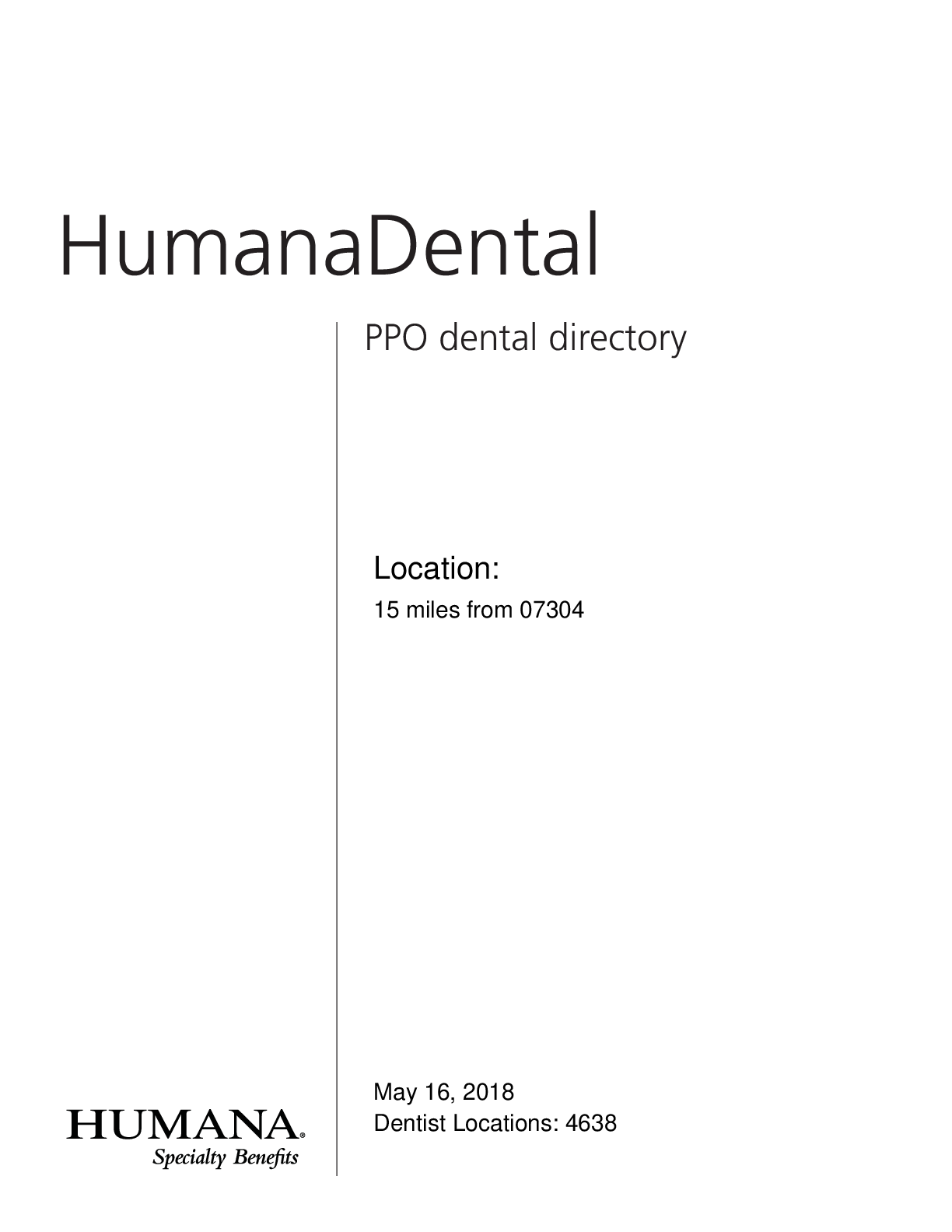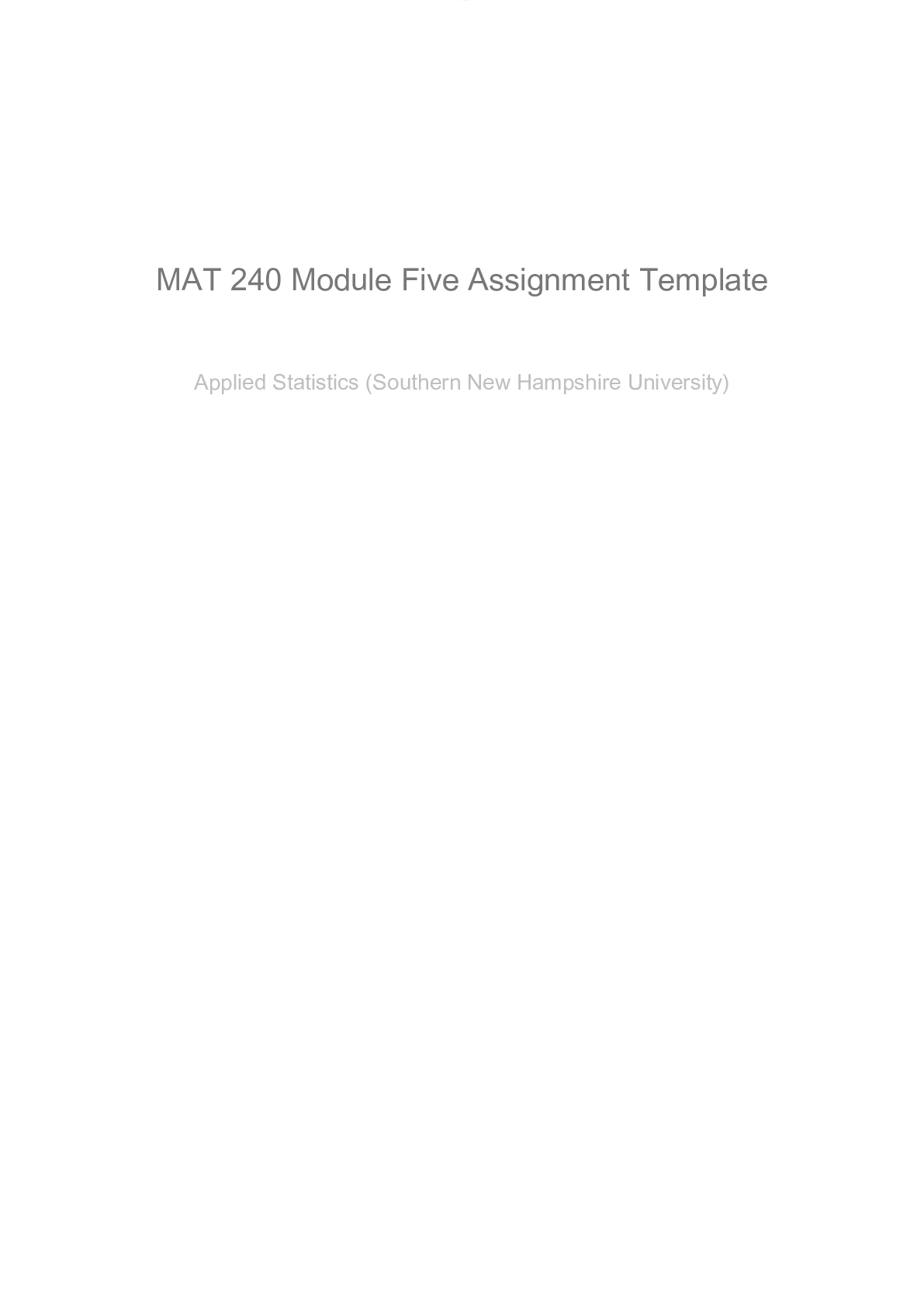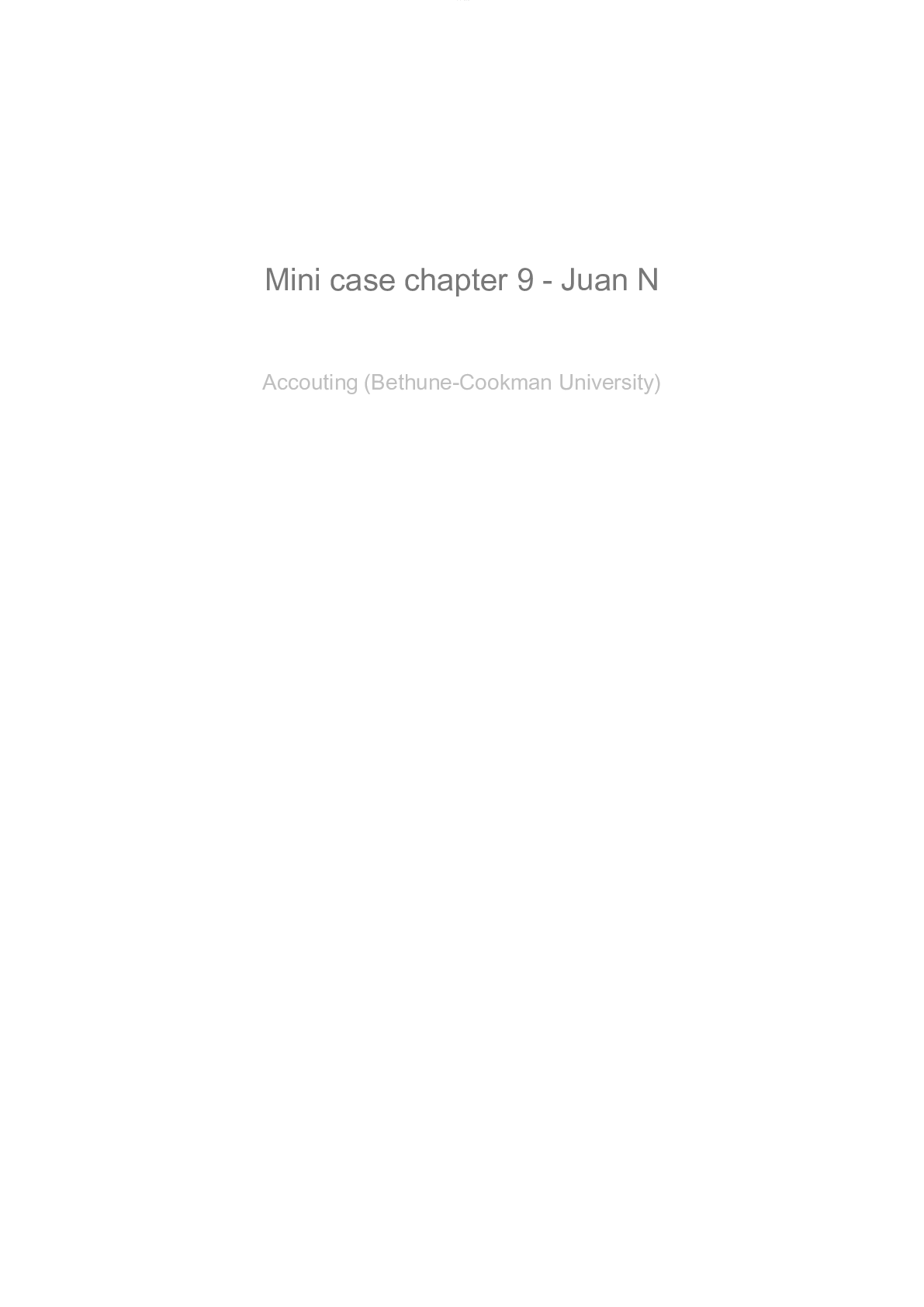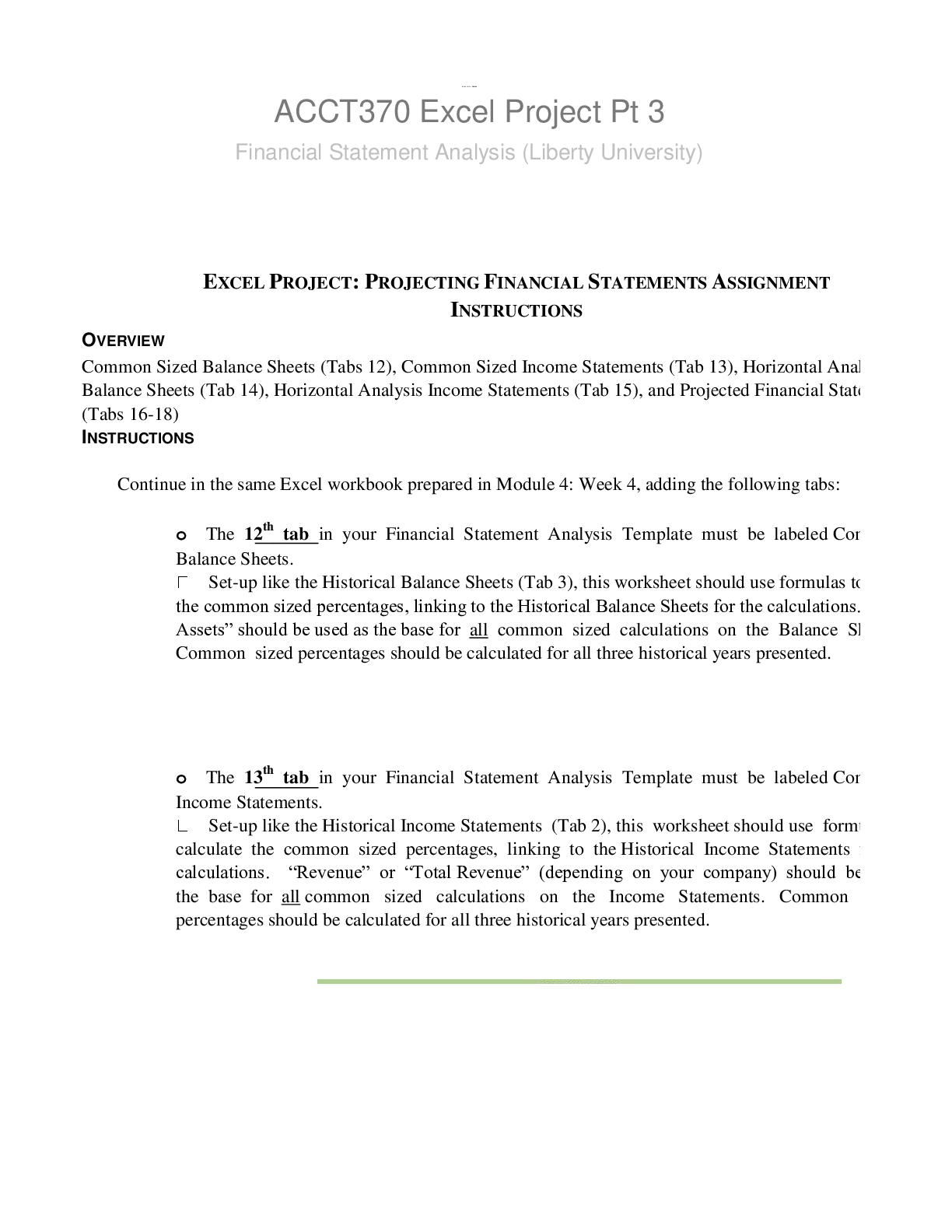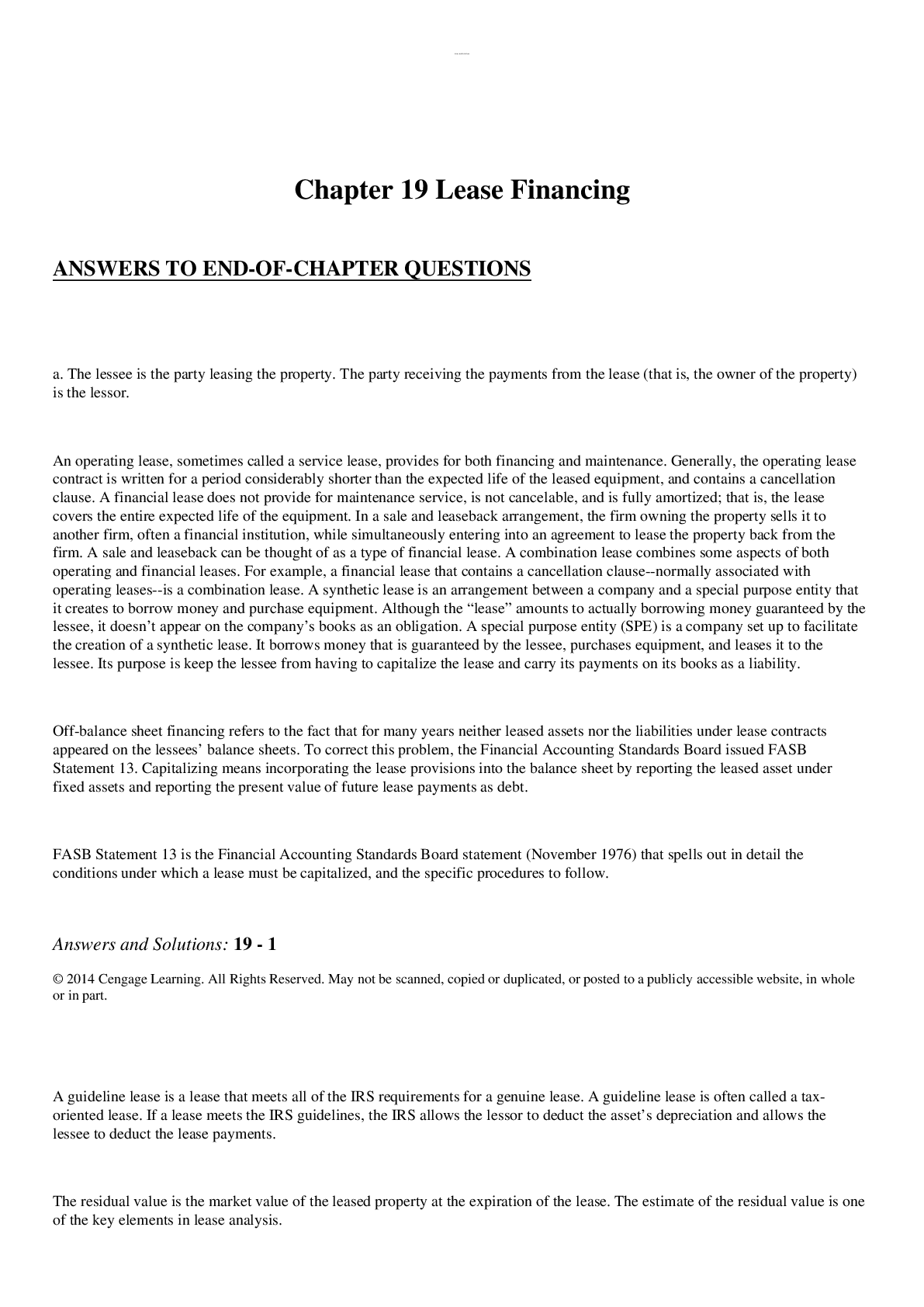Human Resource Management > Solutions Guide > SHRM CP EXAM COMPLETE SOLUTION GUIDE A+ 2022 (All)
SHRM CP EXAM COMPLETE SOLUTION GUIDE A+ 2022
Document Content and Description Below
SHRM CP EXAM. Career Planning - Actions & activities that individuals perform in order to give direction to their work lives. Brain drain - Exit of educated & skilled citizens from emerging & de... veloping countries for better paying jobs in developed countries. Auditory learners - People who learn best by relying on their sense of hearing. Andragogy - Study of how adults learn. Cost-of-living adjustment (COLA) - Pay adjustment given to eligible employees regardless of performance or organizational profitability; usually linked to inflation. Compa-ratio - Pay rate divided by the midpoint of the pay range. Broadbanding - Combining several salary grades or job classifications with narrow pay ranges unto one brand with a wider salary spread. Behavioral interview - Type of interview that focuses on how applicants previously handled real situations. Applicant tracking software (ATS) - Software that provides an automated way for organizations to manage the recruiting process. Developmental activities - Activities that focus on preparing employees for future responsibilities while increasing their capacity to perform their current jobs. Compensation - All financial returns (beyond any benefits payments or services), including salary and allowances. Career development - Process by which employees progress through a series of stages in their careers, each of which is characterized by relatively unique, themes, and tasks. Benefits - Payments or services provided to employees to cover issues such as retirement, health care, sick pay/disability schemes, life insurance, and paid time off. Apprenticeship - Related to technical skills training; often a partnership between employers and unions. Competency-based interview - Type of interview in which the interviewer asks questions related to competencies for the position and asks candidates to provide examples of times they demonstrated the competencies. ADDIE model - 5 step instructional design process that governs the development of learning programs. Assessment centers - Assessment tools that provide candidates a wide range of leadership situations and problem-solving exercises. Blended learning - Planned approach to learning that included a combination of instructor-led training, self-directed study, and /or on-the-job training. Career management - Preparing, implementing, and monitoring employees' career paths, with a primary focus on the goals and needs of the organization. Competencies - Clusters of highly interrelated attributes, including knowledge, skills, or abilities (KSA) that give rise to the behaviors needed to perform a given job effectively. Strategy - A plan of action for accomplishing an organization's long-range goals. SWOT analysis - Process for assessing an organization's strategic capabilities in comparison to threats and opportunities identified during environmental scanning. Value drivers - Actions, processes, or results that are needed to deliver a desired value. Vision statement - Vivid, guiding image of an organization's desired future, the future it hopes to attain through its strategy. Organizational values - Beliefs that are important to an organization and often dictate employee behavior. Strategic fit - A state in which an organization's strategy is consistent with its external opportunities and circumstances and its internal structure, resources, and capabilities. Strategic management - The actions that leaders take to move their organizations toward those goals and create value for all stakeholders. Strategic planning - The process of setting goals and designing a path toward a competitive position. Metrics - Performance parameters based on the relationship between 2 or more measures. Mission statement - Statement that specifies what activities an organization intends to pursue and what course management has carted for the future; a concise statement of its strategy. Net profit margin - Ratio of net income (gross sales minus expenses and taxes) to net sales. Organizational culture - The basic beliefs and customs shared by members of an organization that contribute to an organization's sense of its identity. Income statement - Statement that reports revenues, expenses, and net income (profit) for a specified period. Lagging indicator - Type of metric that describes an activity that has already occurred. Leading indicator - Type of metric that describes an activity that can change future performance and indicate higher degree of success in achieving strategic goals. Liabilities - Organization's debts and other financial obligations. Due diligence - Necessary level of care and attention that is taken to investigate an action before it is taken. Environmental scanning - Process that involves a systematic survey and interpretation of relevant data to identify external opportunities and threats and to assess how these factors affect the organization currently and how they are likely to affect the organization in the future. Equity - Amount of owners' or shareholders' portion of a business. Gross profit margin - Ratio of gross profit to net sales. Benchmarking - Process that compares performance levels and/or processes of one entity with those of another to identify performance gaps and set goals aimed at improving performance. Blue ocean strategies - Strategies that generate competitive advantage by creating a new marketplace arena in which there are no other competitors. Business case - Presentation to management that establishes that a specific problem exists and argues that the proposed solution is the best way to solve the problem in terms of time, cost efficiency, and probability of success. Cash flow statement - Statement the shows incoming and outgoing cash in the areas of operations, investments, and financing and remaining cash reserves; reflects an organization's ability to meet its current and short-term obligations. Accounts payable - Money an organization owed its vendors and suppliers. Accounts receivable - Money an organization's customers owe the organization. Assets - Financial, physical, and sometimes intangible properties an organization owns. Balance sheet - Statement that reports the financial position of the organization at a specific point in time; shows assets, liabilities, and shareholder equity. Vicarious liability - Legal doctrine under which a party can be held liable for the wrongful actions of another party. Weingarten rights - Union employees' right in U.S. to have a union representative or coworker present during an investigatory interview. Worker Adjustment and Retraining Notification (WARN) Act - U.S. act that requires some employers to give a minimum of 60 days' notice if a plant is to close or is mass layoffs will occur. Workweek - Any fixed, recurring period of 168 consecutive hours (7 days time 24 hours = 168 hrs) Uniform Guidelines on Employee Selection Procedures - Procedural document designed to assist employers in complying with federal regulations prohibiting discrimination. Uniformed Services Employment and Reemployment Rights Act (USERRA) - U.S. act that protects the employment reemployment, and retention rights of persons who serve or have served in the uniformed services. Vesting - Process by which a retirement benefit becomes nonforfeitable. Veto - Action of rejecting a bill or statute. Stakeholders - All those affected by an organization's social, environmental, and economic impact shareholders, employees, customers, suppliers, regulators, and local communities. Sustainability - Practices that balance economic, social, and environmental interests to secure the interests of present and future generations. Totaization agreements - Bilateral agreements entered into by many countries to eliminate double taxation for individuals on international assignments. Triple bottom line - Economic, social, and environmental impact metrics used to determine an organization's success. Risk management - Identification, evaluation, and control of risk that may affect an organization, typically incorporating the use of insurance and other strategies. Risk position - An organization's desired gain or acceptable loss in value. Risk scorecard - Tool used to gather individual assessments of various characteristics of risk (e.g. frequency of occurrence, degree of impact/loss/gain for the organization, degree of efficacy of current controls). Risk tolerance - Amount of uncertainty an organization is willing to pursue or to accept to attain its risk management. Reverse innovation - Innovations created for or by emerging-economy markets and then imported to developed-economy markets. Risk - The effect of uncertainty or objectives; outcomes may include opportunities or threats. Risk appetite - Amount of risk the organization or function is willing to pursue or accept to attain its goals. Risk control - An action taken to manage a risk. Redeployment - Process by which an organization moves an employee out of an international assignment; can involve moving back to the home country, moving to a different global location, or moving to a new location or position in the current host country. Regulation - A rule or order issues by an administrative agency; often has the force of law. Repatriation - Process of reintegrating employees back into the home country after an assignment; includes adjustment to the new job and readjustment to the home culture and conditions. Residual risk - Amount of uncertainty that remains after all risk management efforts have been exhausted. Protected class - People who are covered under a particular federal or state anti-discrimination law. Prudent person rule - States that an Employee Retirement Income Security Act plan fiduciary has legal and financial obligations not to take more risks when investing employee benefit program funds than a reasonable knowledgeable, prudent investor would under similar circumstances. Public comment period - Time allowed for the public to express its views and concerns regarding an action of an administrative agency. ****************************CONTINUED************* [Show More]
Last updated: 1 year ago
Preview 1 out of 28 pages
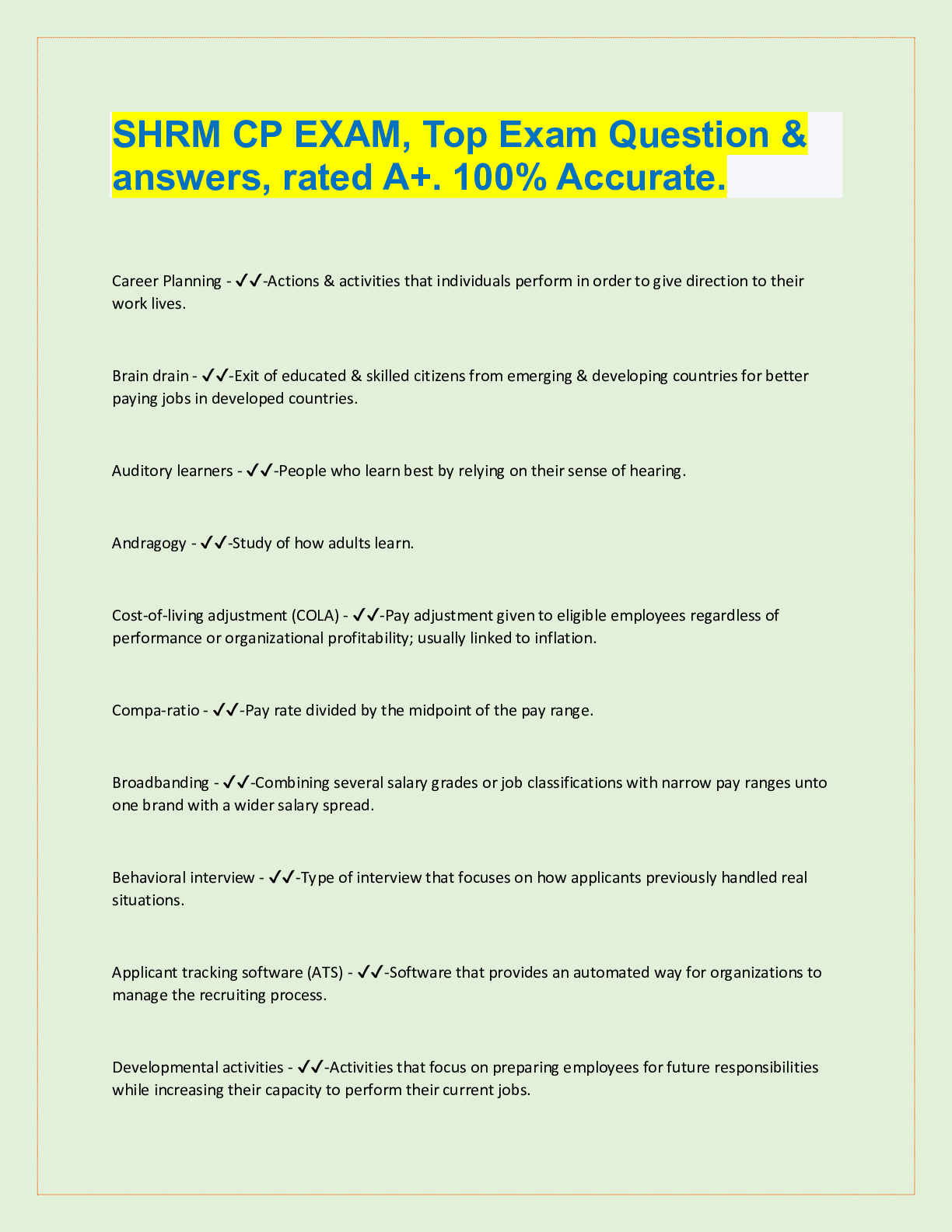
Reviews( 0 )
Document information
Connected school, study & course
About the document
Uploaded On
Sep 09, 2022
Number of pages
28
Written in
Additional information
This document has been written for:
Uploaded
Sep 09, 2022
Downloads
0
Views
98

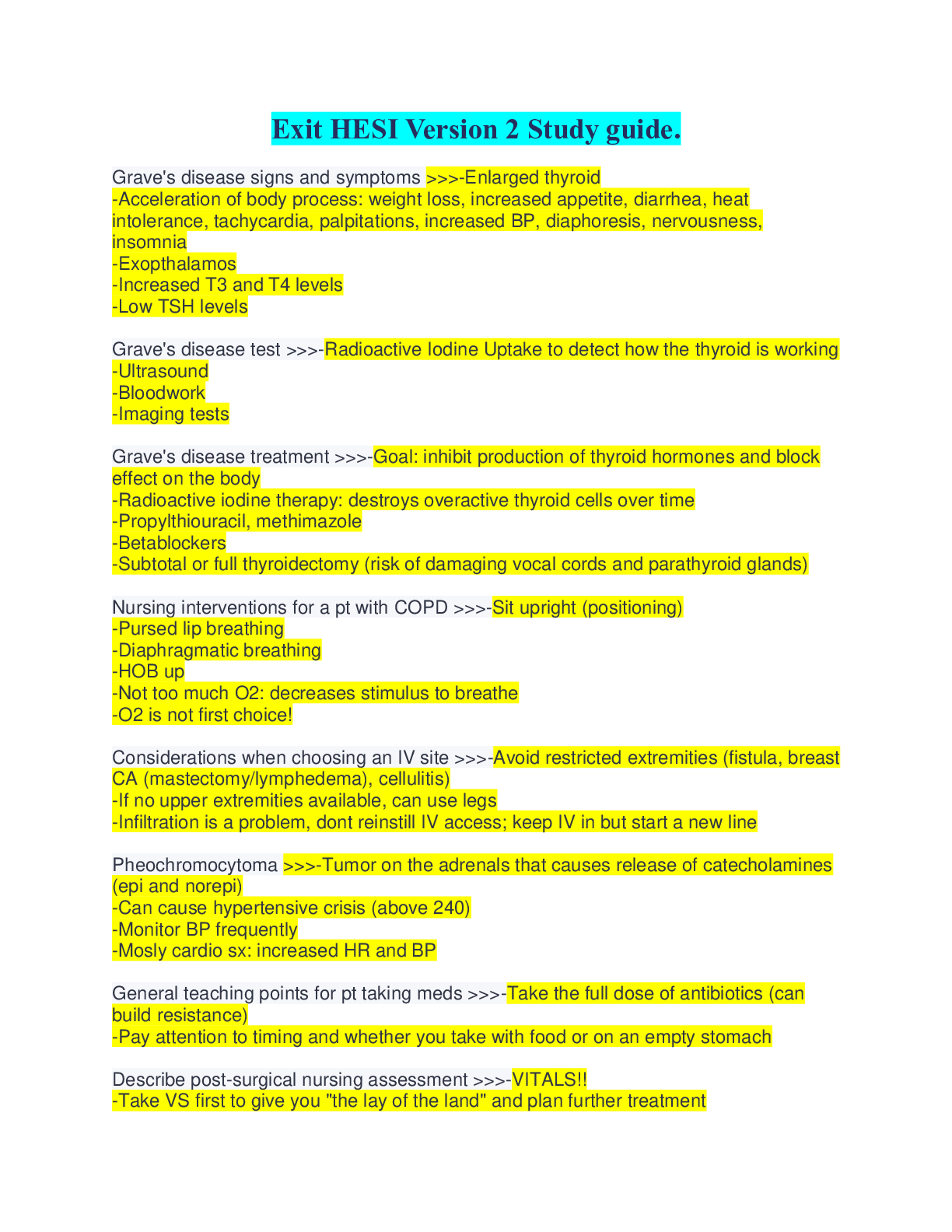
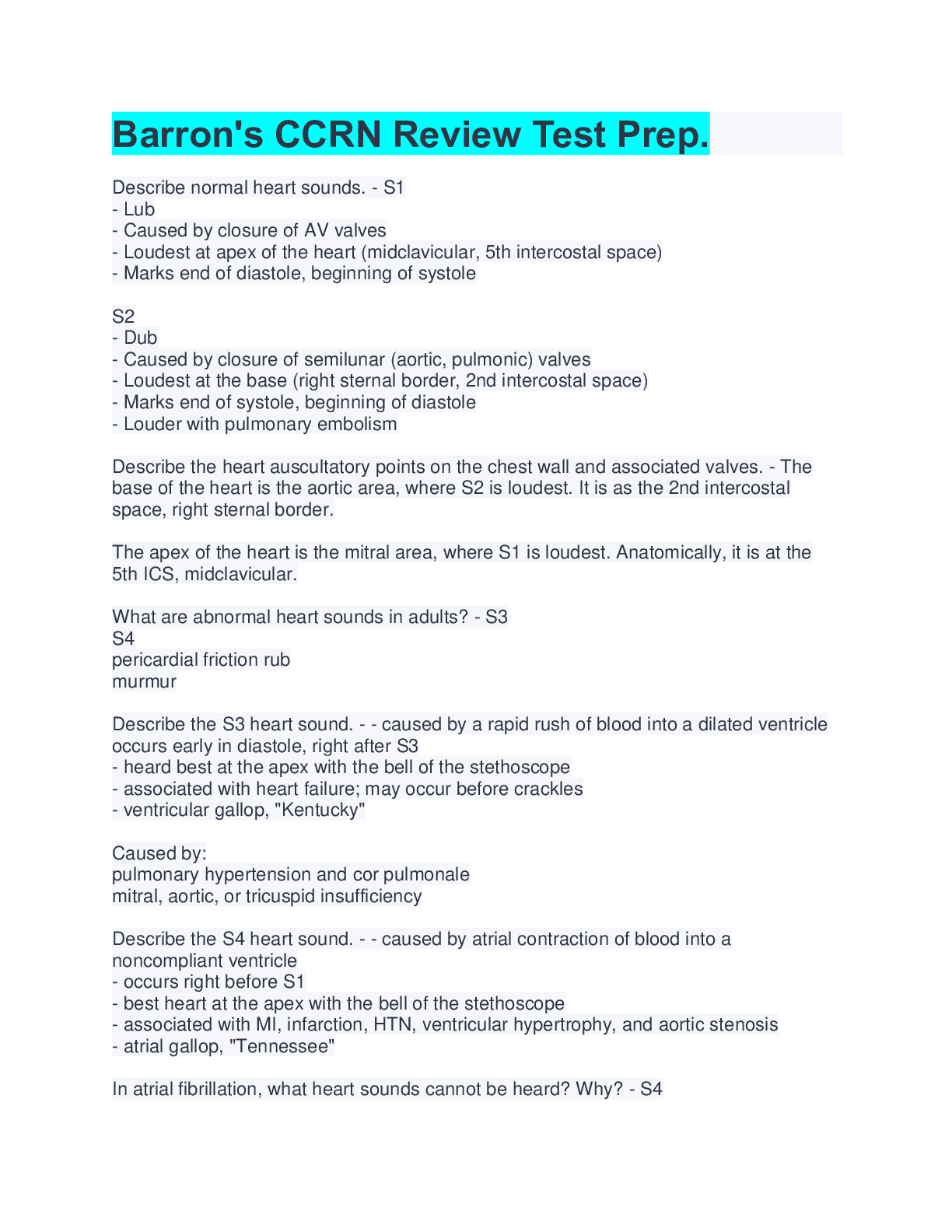



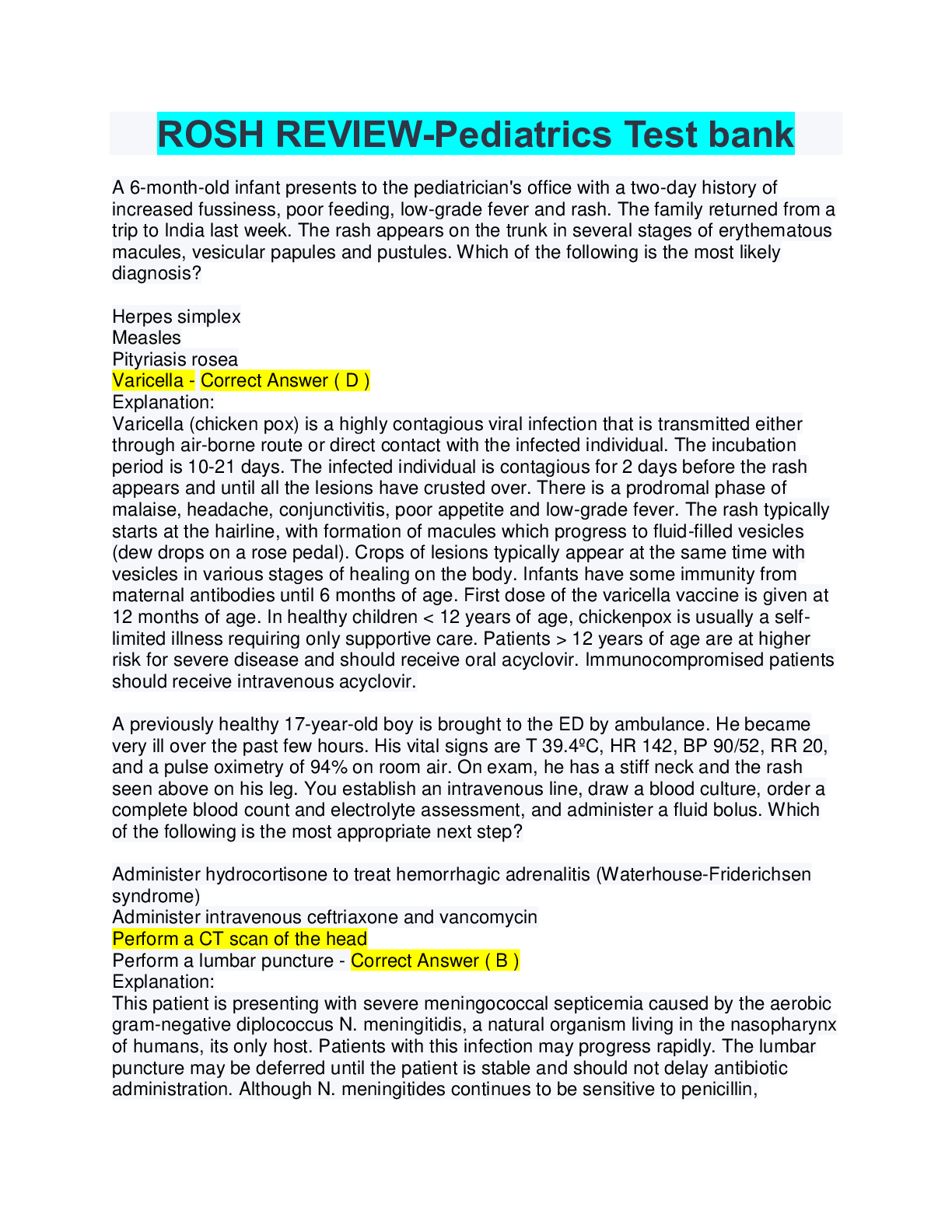
 End of Rotation Exam.png)
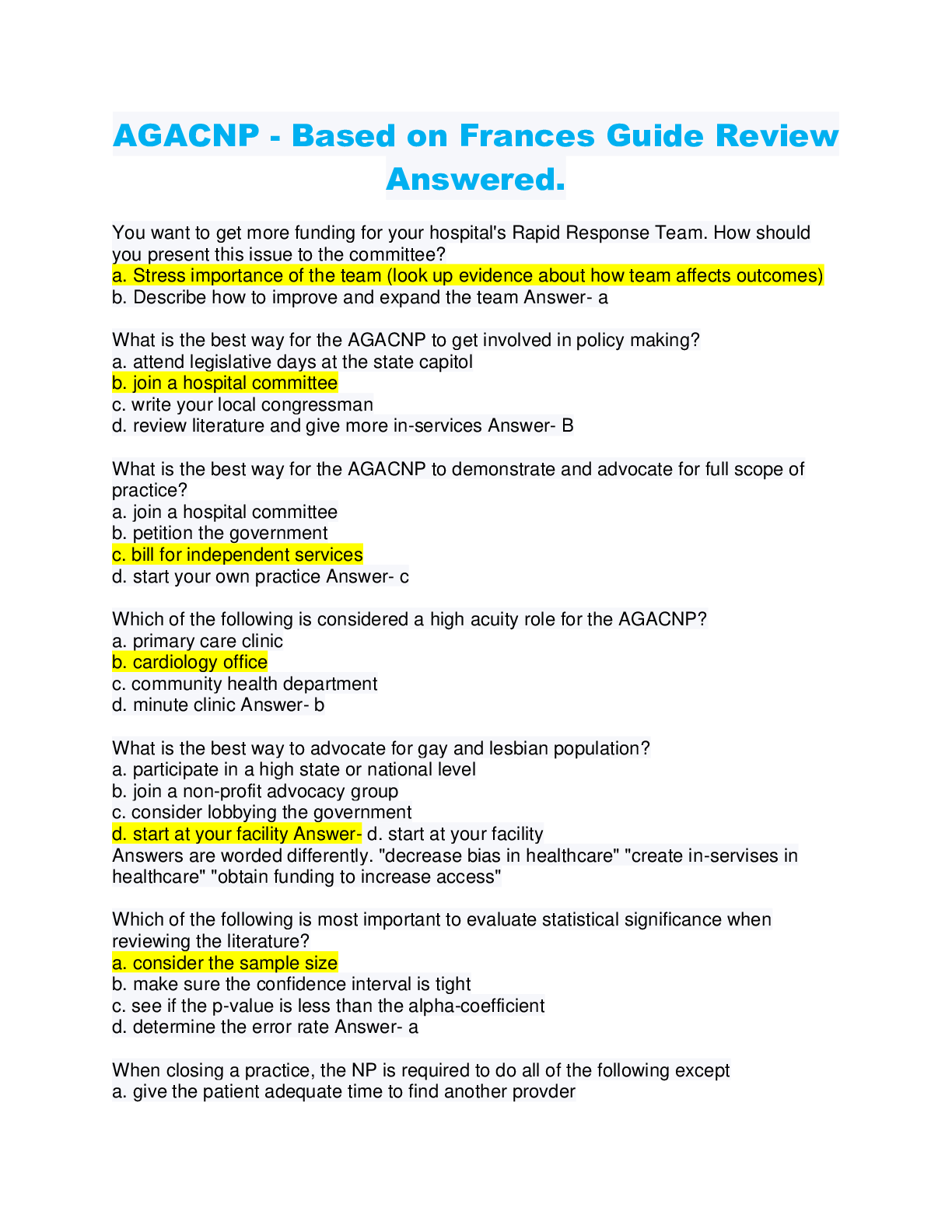
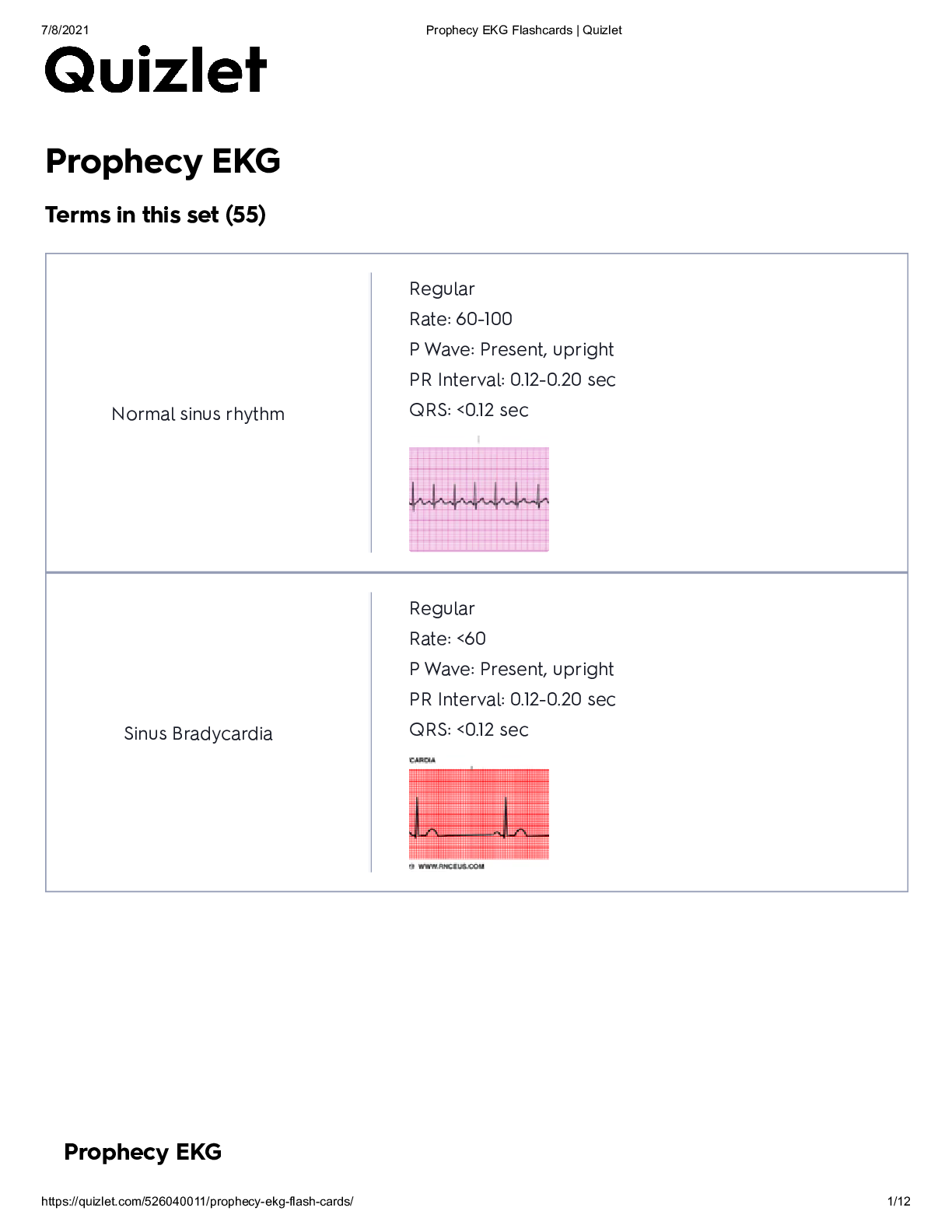


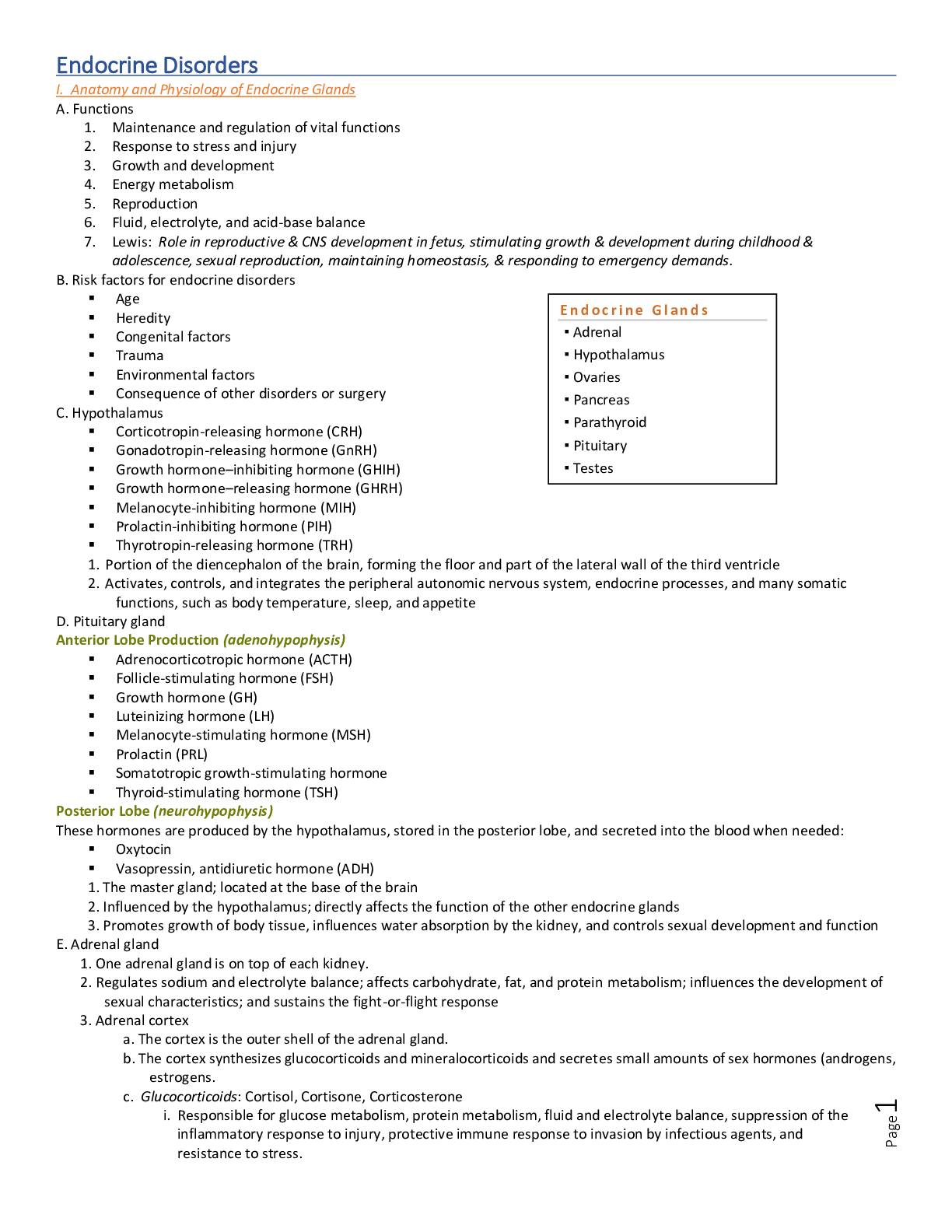
 2022 test Bank.png)
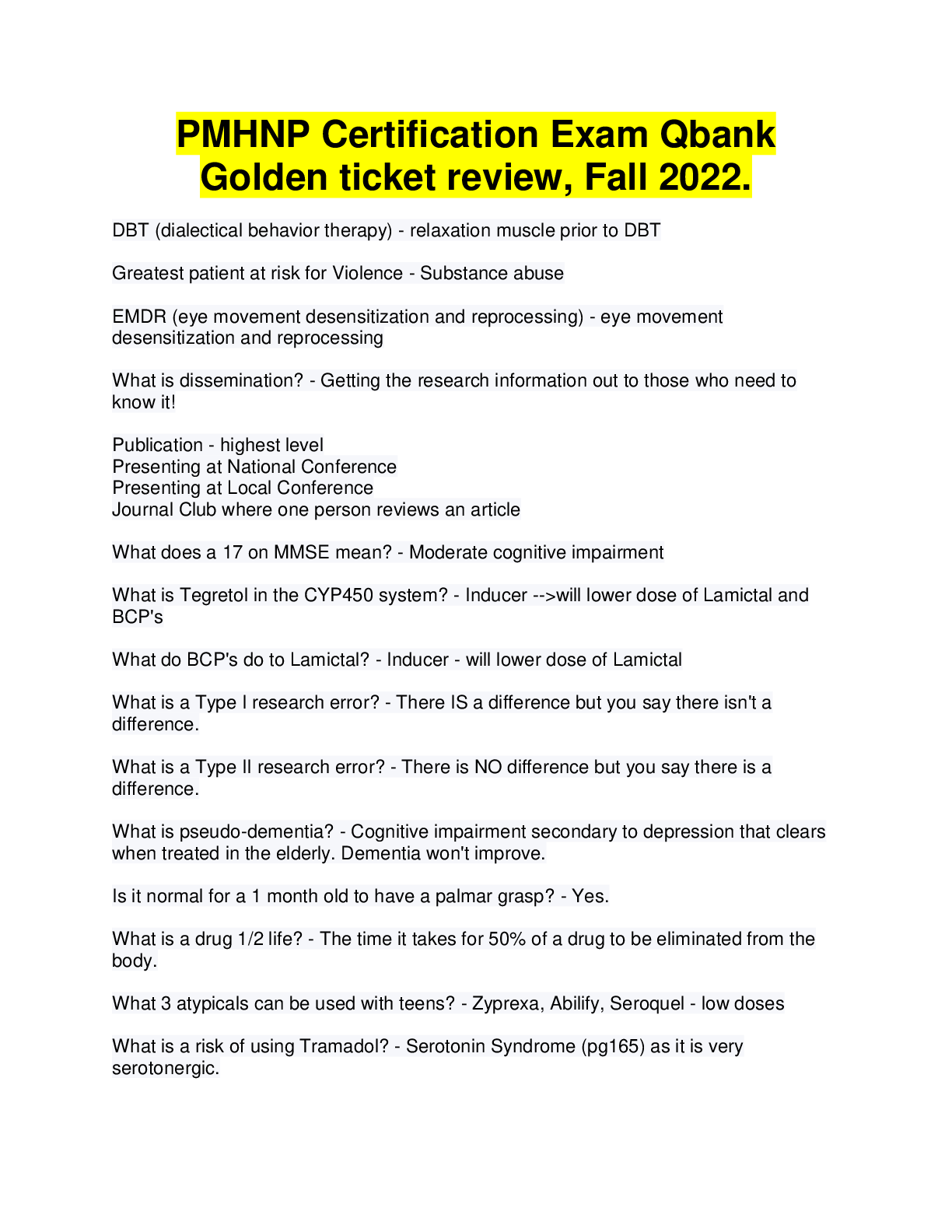
 V1-V2.png)
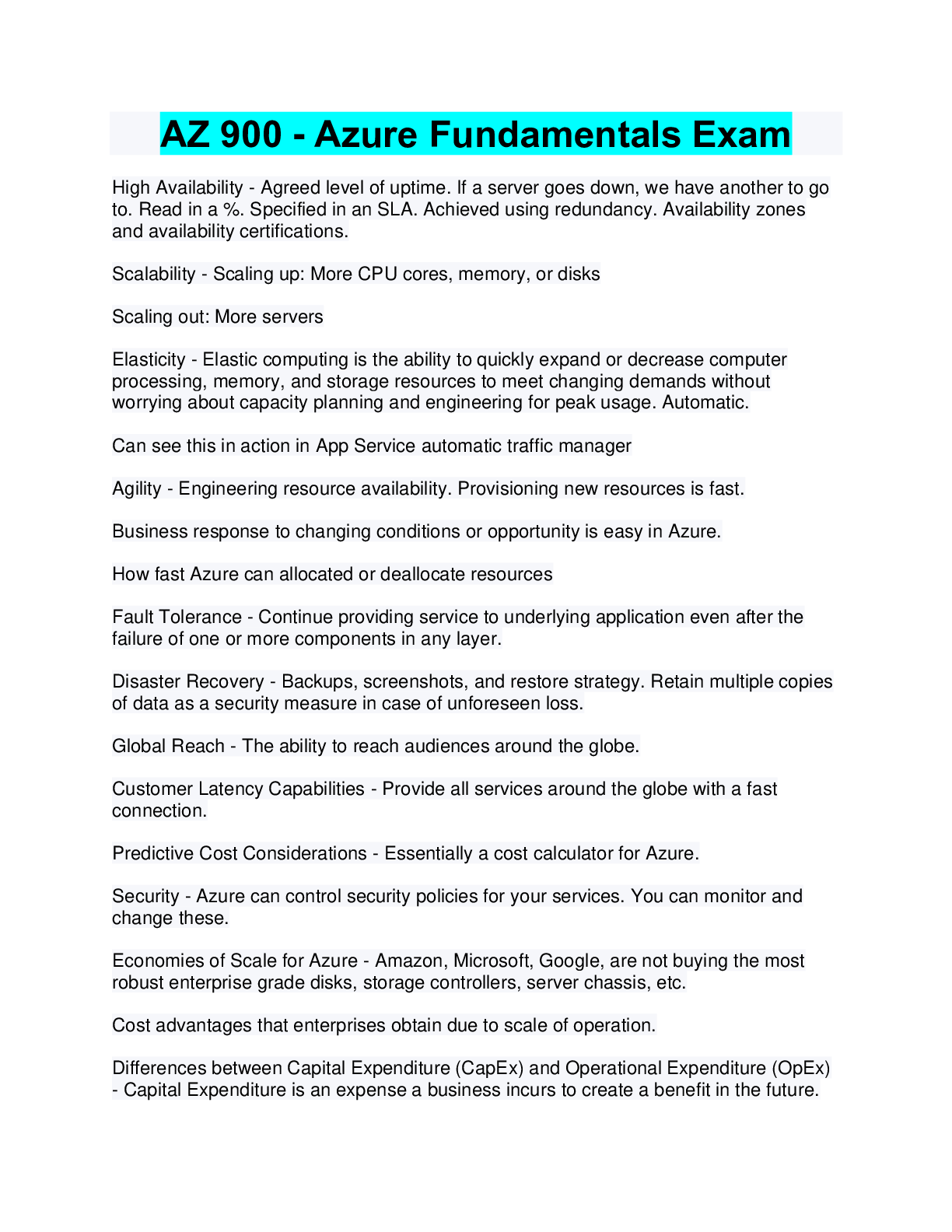
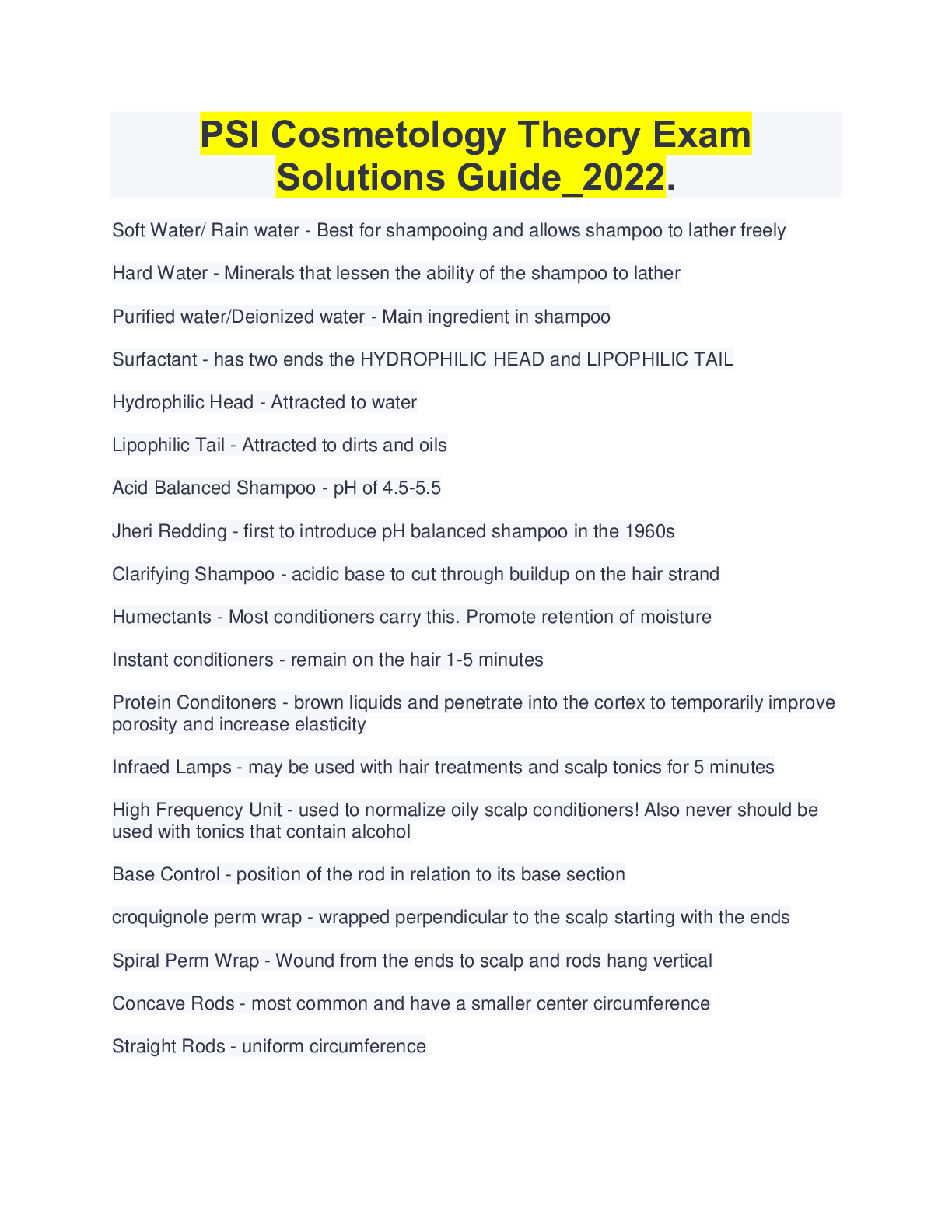
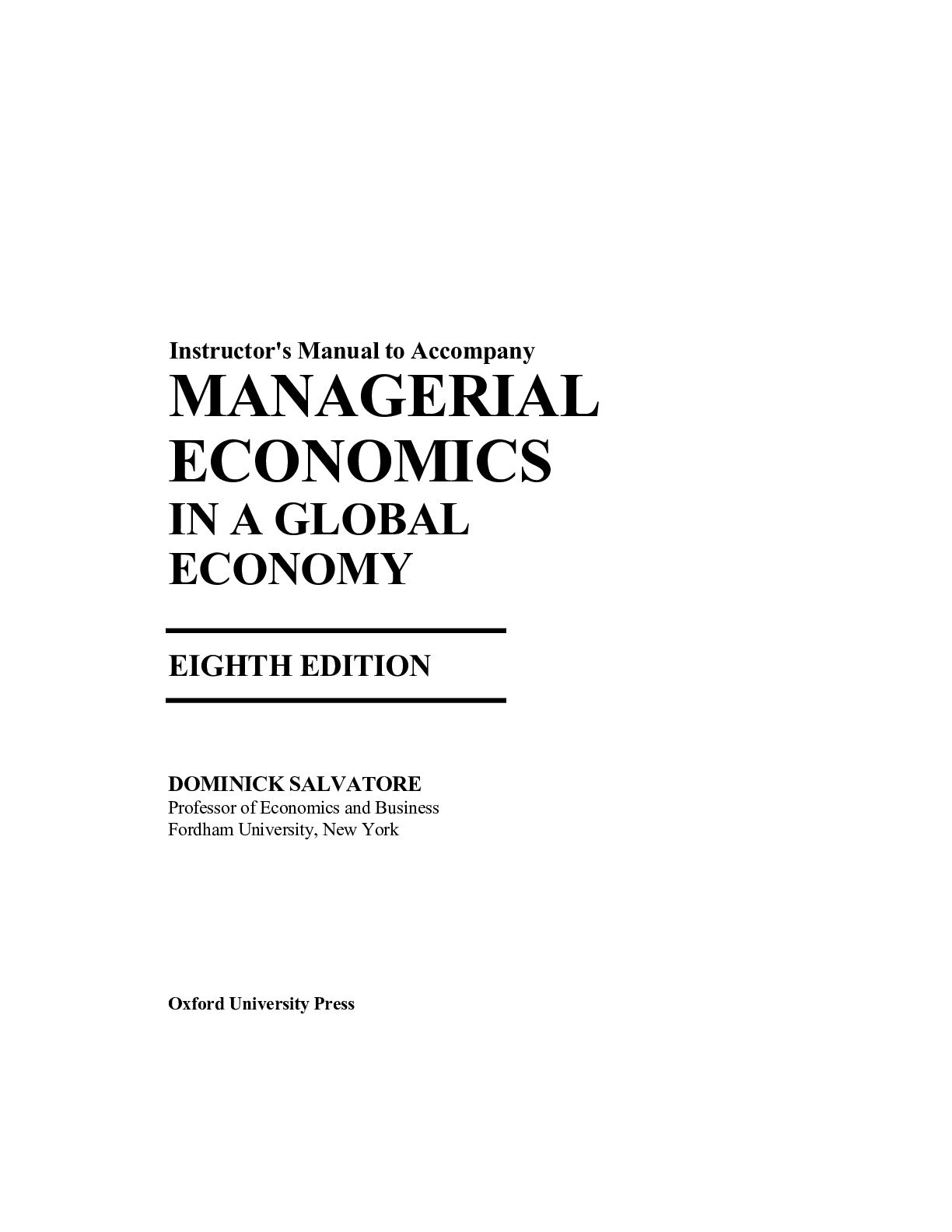
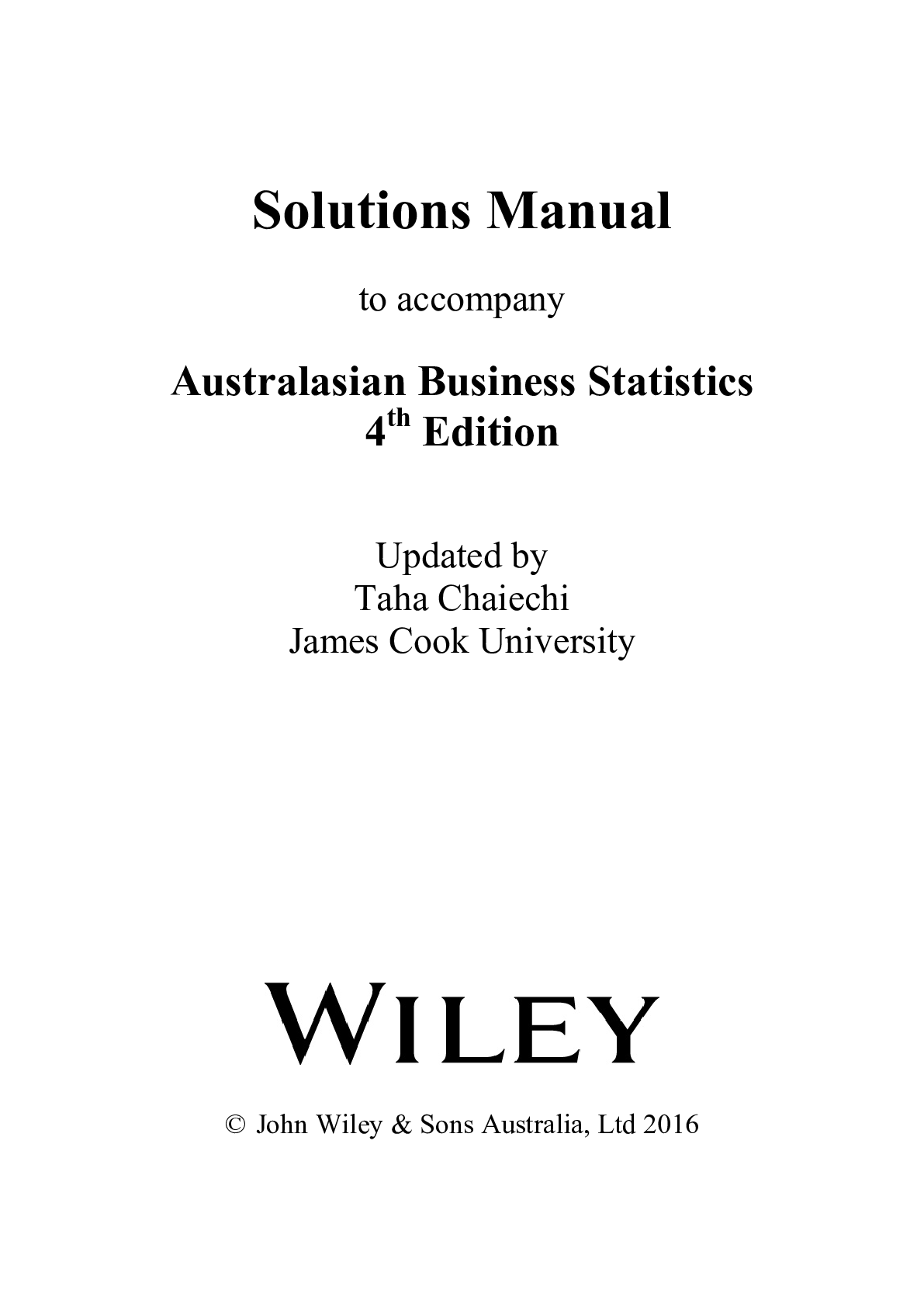
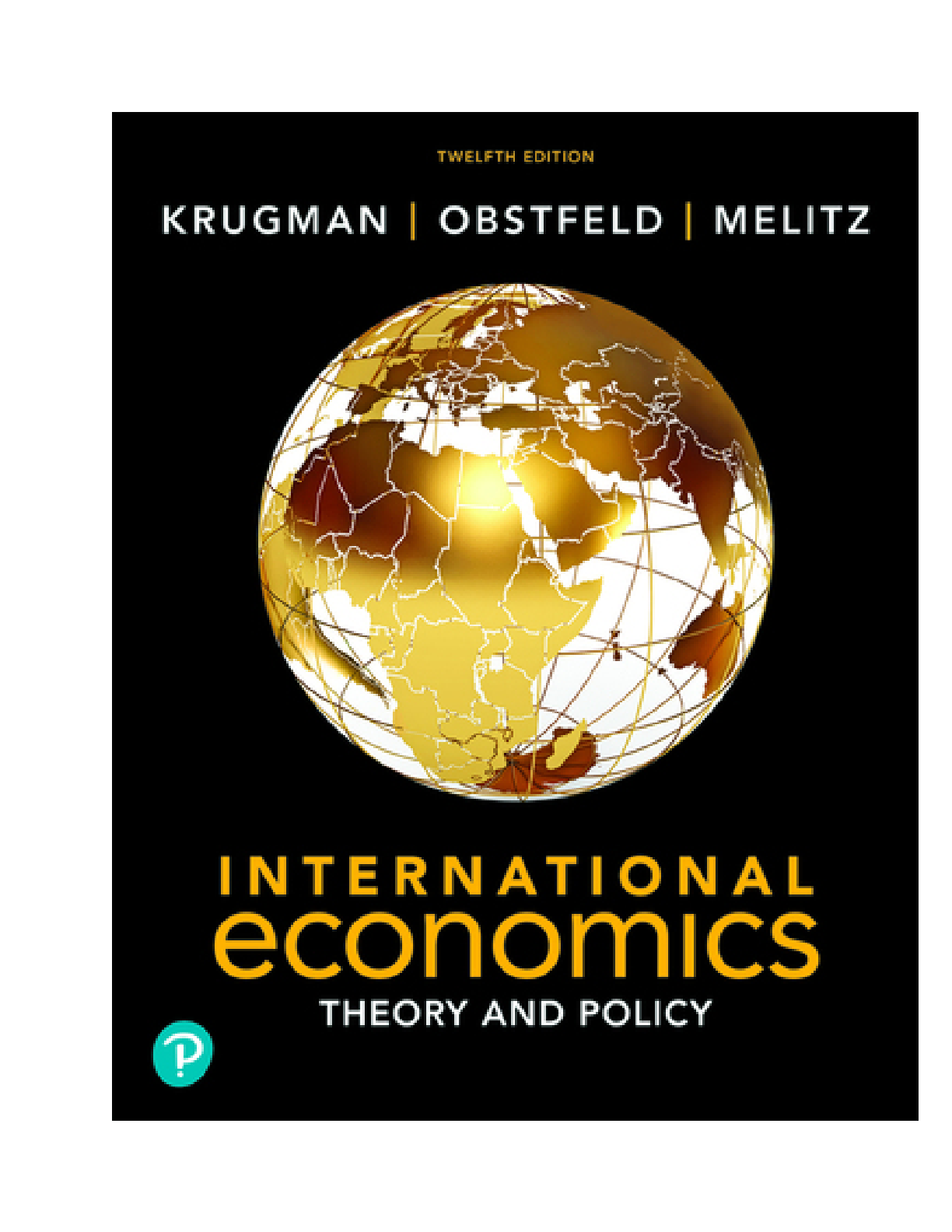
.png)
